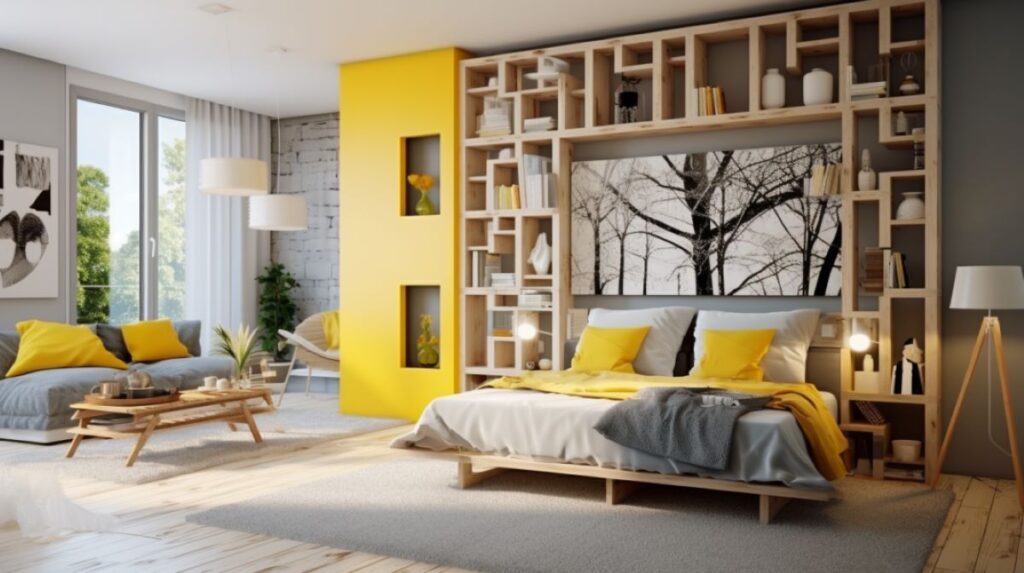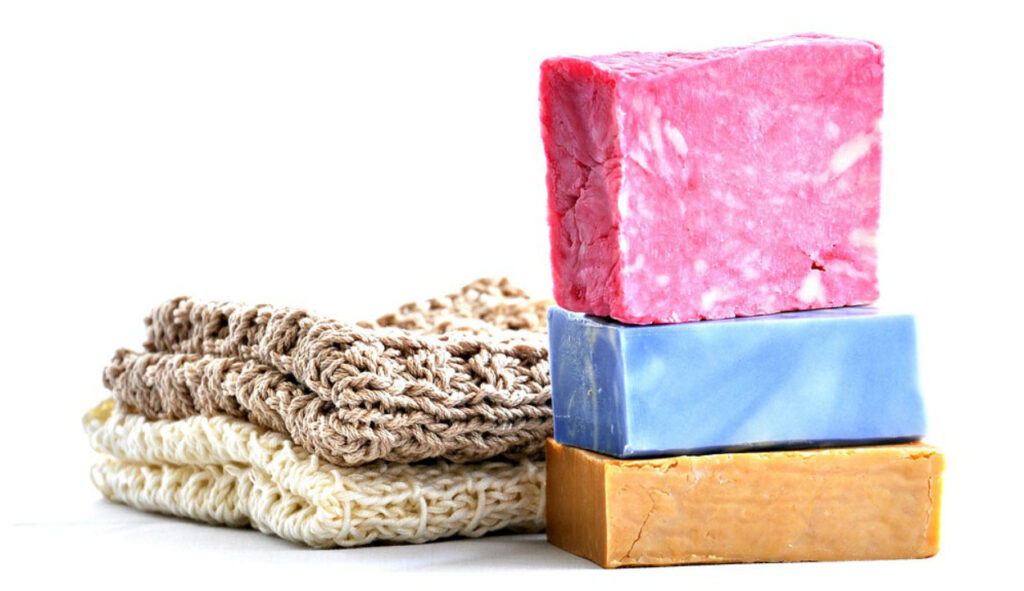Decluttering and Organizing: Simple Tips for a Tidy Home
A tidy home doesn’t happen overnight, but small, steady steps can make an incredible difference. Clutter weighs on your mind more than you might realize.
- Decluttering Defined
- The Organizing Process
- Decluttering and Organizing by Room
- Maintaining an Organized Home
- Frequently Asked Questions
- How can I declutter my home quickly and efficiently?
- What is the 12 12 12 rule for decluttering?
- How can I declutter a room in just 30 minutes?
- What are some minimalist tips for decluttering?
- What is the golden rule of decluttering and organizing?
- How often should I declutter?
- What’s the easiest room to organize?
- How do I stay motivated to declutter?
- What storage containers are best for organizing?
- How can I maintain my organized spaces?
It steals time, adds stress, and makes even simple tasks feel harder. When your home feels calm and organized, everything runs more smoothly. You think clearly. You breathe easier. You enjoy your space again.
Decluttering is all about letting go of what you no longer need. Organizing is about giving the things you keep a home that makes sense for your everyday life. When those two work together, your home becomes more peaceful, more functional, and easier to maintain.
You don’t need fancy bins or a full weekend to get started. Begin with one small space, set simple goals, and be honest about what truly serves your family. Once you clear the clutter, you can build easy systems that help your home stay neat, whether it’s labeling shelves, using smart storage, or creating routines that fit your lifestyle.
A tidy home isn’t about perfection. It’s about creating a space that supports your day, brings calm to your routines, and gives you room to enjoy the things that matter most.
Decluttering Defined
Decluttering is the process of removing what you no longer need so your home can function smoothly again. Clutter builds up fast, and knowing where to begin can feel overwhelming, but starting small makes a huge difference.
Begin by noticing what you’re not using. A simple question helps guide the process: have you used it in the past year? If not, it may be time to donate, recycle, or toss it.
Breaking the work into small tasks keeps things manageable. Try:
- Keeping a “get rid of it” box and filling it as you walk through each room
- Sorting items into keep, donate, and toss piles
- Using a checklist to stay focused and organized
As you declutter, be mindful of the environment. Donate items in good condition, recycle whenever possible, and dispose of hazardous materials properly.
If you’re working with a large space, stick to a steady routine and avoid bringing in new clutter while you’re clearing out the old. Small, consistent steps lead to a calmer, more functional home.
The Organizing Process
The organizing process can feel somewhat trivial or menial at first, but keep the end goal in mind. By following a few simple steps, you can create an efficient and organized system that works for you. Not only will consistent organization habits reduce disorganization in the future, but you’ll also feel better in your living space and improve the quality of life for your loved ones.
Decluttering and organizing aren’t menial tasks; they’re labors of love that create a nurturing and comfortable environment for your family.
First, set realistic goals for yourself. Don’t try to tackle everything at once. Break down the process into manageable tasks, and prioritize what needs to be done first. This will help you stay motivated and avoid feeling overwhelmed.
Next, evaluate your current systems. What is working and what isn’t? Are there areas where you can streamline or eliminate clutter? Take the time to level and declutter your space before implementing new systems.
When it comes to home organizing, it’s important to create systems that are easy to maintain. This means finding a place for everything and making sure everything is in its place. Consider using labels, storage containers, and other organizational tools to help keep things tidy.
Finally, don’t forget to evaluate your progress. Take the time to reflect on what’s working and what’s not, and make adjustments as needed. With a little effort and patience, you can create an organized and efficient space that works for you.
Decluttering and Organizing by Room
Decluttering and organizing by room is a great way to tackle the task of decluttering and organizing your home. By breaking the task down into smaller, more manageable parts, you can focus on one area at a time and avoid feeling overwhelmed.
Kitchen Organizing
The kitchen is often one of the busiest rooms in the house, and it can be a challenge to keep it organized. Some tips for kitchen organizing include decluttering your utensils, organizing your pantry, and finding creative storage solutions.
Bedroom and Closet Organization
The bedroom and closet are two areas that can quickly become cluttered. Consider using drawer dividers, shoe organizers, and other storage solutions to keep these areas organized.
Bathroom Organization
The bathroom is another area that can become cluttered quickly. To keep your bathroom organized, consider organizing your medicine cabinet, decluttering your drawers, and finding creative storage solutions.
Workspace Organization
Whether you work from home or just need a space to pay bills and manage paperwork, having an organized workspace is essential. Consider using a checklist to keep your desk organized and finding creative storage solutions for your books and other supplies. Under-desk organizers are especially useful for office spaces to prevent wasted space.
Living Room Organization
The living room is often the hub of the home, and it can be challenging to keep it organized. Some tips for living room organization include decluttering bookcases, consoles, and magazines, and finding creative storage solutions for your TV and other electronics. Coffee tables with storage compartments and other furniture with built-in storage can be especially useful.
Entryway Organization
The entryway is the first area of your home that guests see, so it’s essential to keep it organized. Consider using hooks for coats and bags, a shoe rack for shoes, and finding creative storage solutions for other items.
Laundry Room Organization
The laundry room is another area that can become cluttered quickly. To keep your laundry room organized, consider using bins for sorting clothes, finding creative storage solutions for cleaning supplies, and organizing small areas. If you have a larger laundry room, organize the room by usage. Dirty laundry has its own space; clean laundry has its own spot, a separate area for ironing, and so on.
Organizing Other Areas
In addition to the rooms listed above, many other areas of your home can benefit from decluttering and organizing. Consider organizing your garage and outdoor areas, finding storage solutions for your seasonal items, and decluttering your storage spaces.
Storage Solutions
Finding the right storage solutions is essential for keeping your home organized. Consider using containers, bins, and hooks to help you stay organized.
Disposing of Clutter
When decluttering, it’s essential to dispose of your clutter properly. Consider donating, selling, recycling, or throwing away items that you no longer need.
Maintaining an Organized Home
Once you’ve decluttered and set up simple systems, the next step is keeping them going. Checklists, small routines, and daily habits help prevent clutter from sneaking back in. Over time, this becomes less about tidying and more about shifting your mindset toward an organized lifestyle.
With practice, these habits feel natural. You’ll spend less time hunting for things and more time enjoying your home.
The Psychological Benefits of Decluttering and Organizing
A tidy home doesn’t just look better. It feels better. Decluttering can reduce stress, boost energy, and make your space more peaceful. When your home is calm and functional, it supports your mental well-being and your family’s, too. Kids thrive in predictable, tidy spaces, and the whole household benefits from a more relaxed environment.
Professional Organizing
If the process feels overwhelming, a professional organizer can be a huge help. They can create a clear, personalized plan and walk you through the steps so the project feels manageable instead of intimidating.
You don’t have to hire someone for the entire job. Even a single session can give you structure, encouragement, and a realistic action plan. Sometimes having someone say, “You can do this, and here’s how,” is exactly what you need to move forward with confidence.
Famous Organizing Methods
There are many famous organizing methods, including the KonMari method by author Marie Kondo.
Consider exploring these additional methods to find one that works best for you:
- The FlyLady System, created by Marla Cilley, focuses on establishing routines and breaking the home into zones for cleaning and decluttering.
- The Minimalist Game, also known as the 30-Day Minimalism Game, involves getting rid of items each day for a month, corresponding to the date (one item on the first day, two on the second, and so on).
- The 4-Box Method requires setting up four boxes during the decluttering process: one for items to keep, one to donate or sell, one for items to be thrown away, and one for items that belong in another room or space.
Get creative, get busy, get cleaning.
Frequently Asked Questions
How can I declutter my home quickly and efficiently?
Start small and work with intention. The easiest approach is to choose one room or one category at a time. Clothing, books, toys, and keepsakes are all great categories to tackle individually. Divide the space into small sections, and move through each one with a keep, donate, and toss bag nearby. When you’re done, load donation items straight into the car so they don’t linger in the house.
What is the 12 12 12 rule for decluttering?
The 12 12 12 rule is a simple way to make quick progress without getting overwhelmed. Find 12 items to throw away, 12 to donate, and 12 to put back where they belong. Repeat daily or weekly as needed. It’s fast, practical, and surprisingly effective.
How can I declutter a room in just 30 minutes?
Set a timer and work in focused spurts. Skip the distractions, choose a small section, and move quickly through items. Use the 12 12 12 rule or a simple keep/donate/toss method to stay on track. Thirty minutes may not finish the whole room, but it creates noticeable progress and builds momentum.
What are some minimalist tips for decluttering?
Minimalism focuses on keeping only what adds value to your life. Try removing duplicates, clearing off surfaces, and letting go of anything you don’t use or enjoy. Focus on purpose and simplicity. When in doubt, choose the option that frees up space and makes your home easier to maintain.
What is the golden rule of decluttering and organizing?
Keep what you love and what you use. Everything else can be donated or tossed. This rule doesn’t mean you can’t keep sentimental items. It simply encourages you to create a home that supports comfort and function instead of being weighed down by things you’re holding onto “just because.”
How often should I declutter?
Most families benefit from a mix of routines:
- Monthly for high-use areas like kitchens and living rooms
- Seasonally for closets and storage spaces
- Once a year for a deeper whole-house reset
Choose what fits your lifestyle and adjust as needed.
What’s the easiest room to organize?
Bathrooms and linen closets are great starting points. They usually contain fewer categories of items, and the results are quick and satisfying. Once you build momentum, move on to larger or more sentimental spaces.
How do I stay motivated to declutter?
Work in short bursts to avoid burnout. A 10–15 minute timer can be incredibly effective. Put on music or a podcast to make the process more enjoyable, and celebrate small wins along the way. Progress adds up quickly.
What storage containers are best for organizing?
Clear bins work well because you can see what’s inside at a glance. Baskets, fabric boxes, or wooden crates add warmth and style if you prefer a more natural look. No matter the container, labeling makes your systems easier to maintain.
How can I maintain my organized spaces?
A few daily habits go a long way. Straighten surfaces, return items to their homes, and do quick resets throughout the week. Revisit your organization systems seasonally to make sure they still support your routines and lifestyle.


